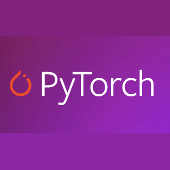| PyTorch Adds New APIs |
| Written by Kay Ewbank | |||
| Tuesday, 10 November 2020 | |||
|
PyTorch has been updated with several new APIs including support for NumPy-Compatible FFT operations, profiling tools and major updates to both distributed data parallel (DDP) and remote procedure call (RPC) based distributed training. PyTorch is an optimized tensor library for deep learning using GPUs and CPUs. It aims to offer a replacement for NumPy that make use of the power of GPUs, while providing a deep learning research platform that provides maximum flexibility and speed.
There are several new front end APIs, all in beta format. These include torch.fft, which implements FFT-related functions with the same API as NumPy. PyTorch has historically supported a few FFT-related functions, but the new API adds more functions for use in scientific fields like signal processing. A second API adds C++ support for nn.transformer modules and allows developers to use the nn.transformer module abstraction from the C++ Frontend. It also means you no longer need to save a module from python/JIT and load into C++ as it can now be used it in C++ directly. The third new API is torch.set_deterministic. This may help identify errors when debugging or testing a program. Its function directs PyTorch operators to select deterministic algorithms when available, and to throw a runtime error if an operation may result in nondeterministic behavior. Along with the new APIs, several features have been moved to a 'stable' level, including custom C++ Classes, the memory profiler, extensions via custom tensor-like objects, user async functions in RPC and a number of other features in torch.distributed. The developers say that one highlight is that CUDA 11 is now officially supported with binaries available at PyTorch.org. This release also includes updates and additions to profiling and performance for RPC, TorchScript and Stack traces in the autograd profiler. Elsewhere, Transforms now support Tensor inputs, batch computation, GPU, and TorchScript, and PyTorch now has native image I/O for JPEG and PNG formats.
More InformationRelated ArticlesPyro Now On Watson Machine Learning More Efficient Style Transfer Algorithm ONNX For AI Model Interoperability Microsoft Cognitive Toolkit Version 2.0 NVIDA Updates Free Deep Learning Software TensorFlow - Googles Open Source AI And Computation Engine To be informed about new articles on I Programmer, sign up for our weekly newsletter, subscribe to the RSS feed and follow us on Twitter, Facebook or Linkedin.
Comments
or email your comment to: comments@i-programmer.info |
|||
| Last Updated ( Tuesday, 10 November 2020 ) |



